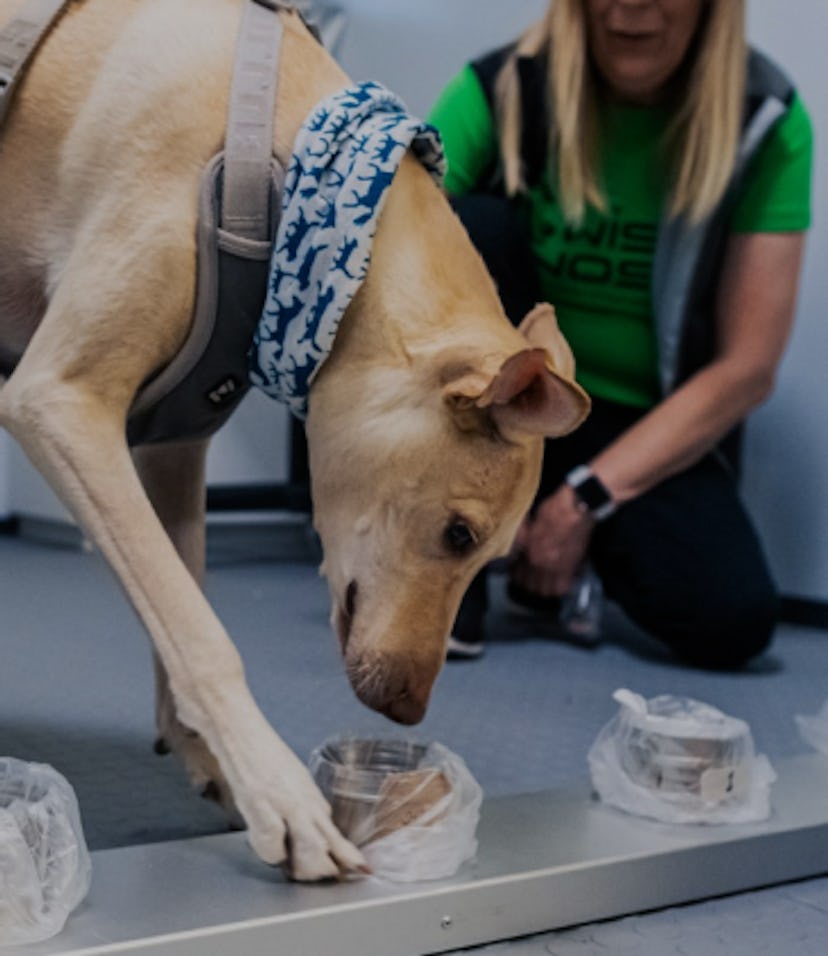Culture
Trained dogs will sniff out people with COVID-19 at a Finnish airport
A dog's nose apparently knows.

In addition to robots checking our temperature, dogs could help detect the novel coronavirus in people with the help of their sniffing abilities. Already research from universities across the globe are attempting to understand and possibly mass-depoly dog smelling abilities on the COVID-19 forefront.
One place to officially use dogs for this purpose is the Helsinki airport, according to its press release. Finavia has announced, "The dogs’ sensitive noses are expected to speed up the process of identifying those infected with COVID-19. The city of Vantaa believes that the dogs will be an efficient method of ensuring health and safety at airports."
So far, this airport is the first one to introduce pups to the game and it's medically safer as dogs are not known to transmit the virus to others. Research suggests that COVID-19 detection comes naturally to dogs as preliminary tests indicate that these animals can smell the virus with "100 percent certainty" as people infected with the virus have a distinct smell (to dogs, at least). It's positive news as this canine detection method is a lot less expensive than regular and lengthy laboratory testing. According to The Guardian, the project in Finland required an estimated $349,213, which is much more affordable and feasible than lab assessments.
Pups to the rescue — It would be more accurate to call this detection method a "screening" effort by the Helsinki airport. According to Anna Hielm-Björkman from the University of Helsinki — which is observing the pilot program — these dogs can sniff COVID-19 within 10 seconds and through relatively small samples of 10-100 molecules.
After a passenger arrives at the airport, they are asked to run a wipe across their skin. That wipe is then placed in a beaker next to other sample beakers and the dog is sent in to sniff these different samples. If it begins to bark, lie down, wag its tail, or yelp, it is understood that the dog has detected the presence of the virus. After that, the passenger is asked to take a polymerase chain reaction test for free. Of course, researchers will have to grapple with questions about allergies that some passengers might have should this screening method become conventional.
Dogs have already helped in detecting cancer in some cases. Cancerous cells are known to produce a particular odor and given that their olfactory senses are 10,000 to 100,000 times sharper than human smelling skills, dogs are able to sniff out these odors on human breath, sweat, urine, saliva, and other material after professional training.
Researchers for the Helsinki initiative sound optimistic about the future of dogs sniffing COVID-19. If it goes successful, you might see a dog sniffing your sample in an airport, classroom, sports event, maybe even a bar.